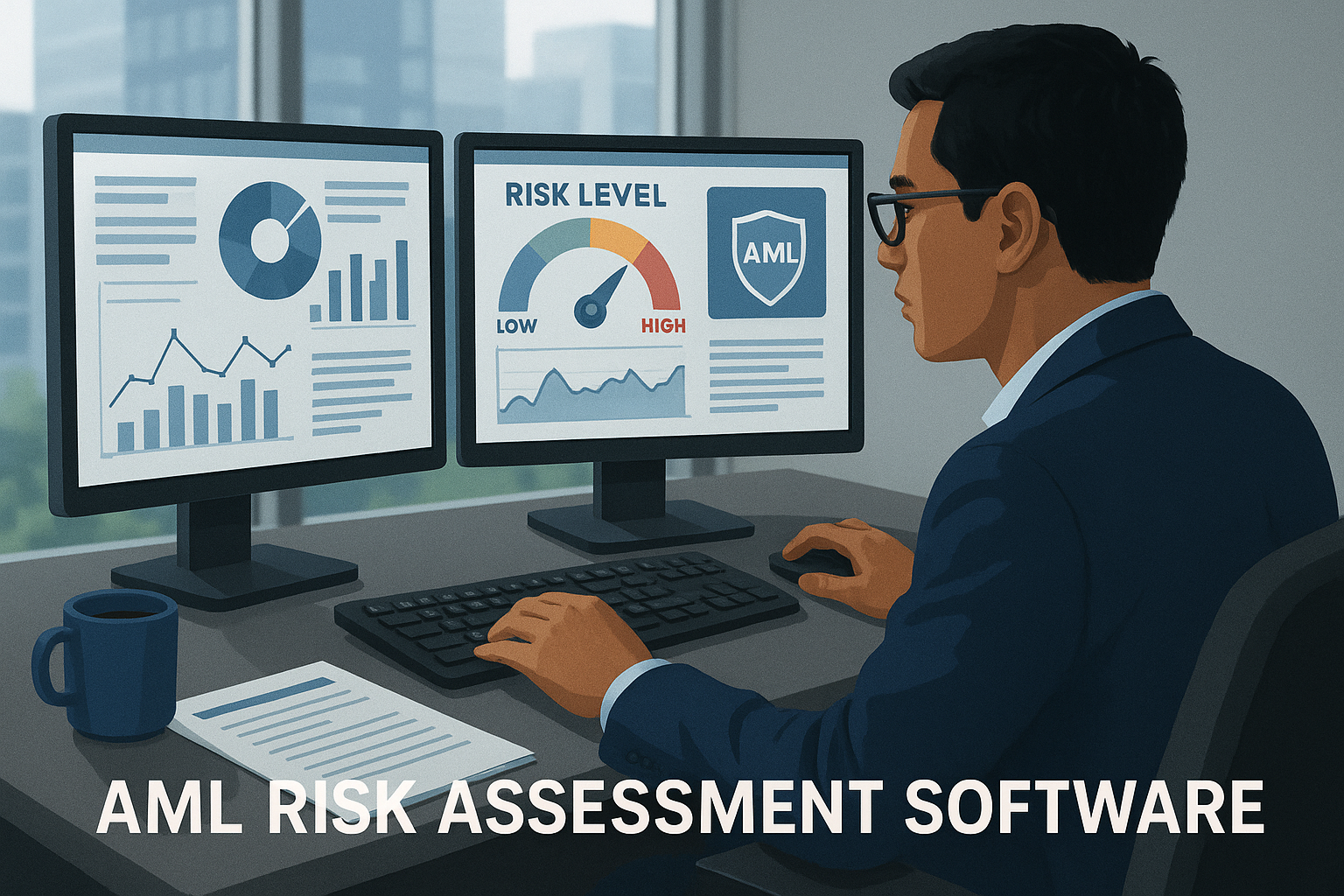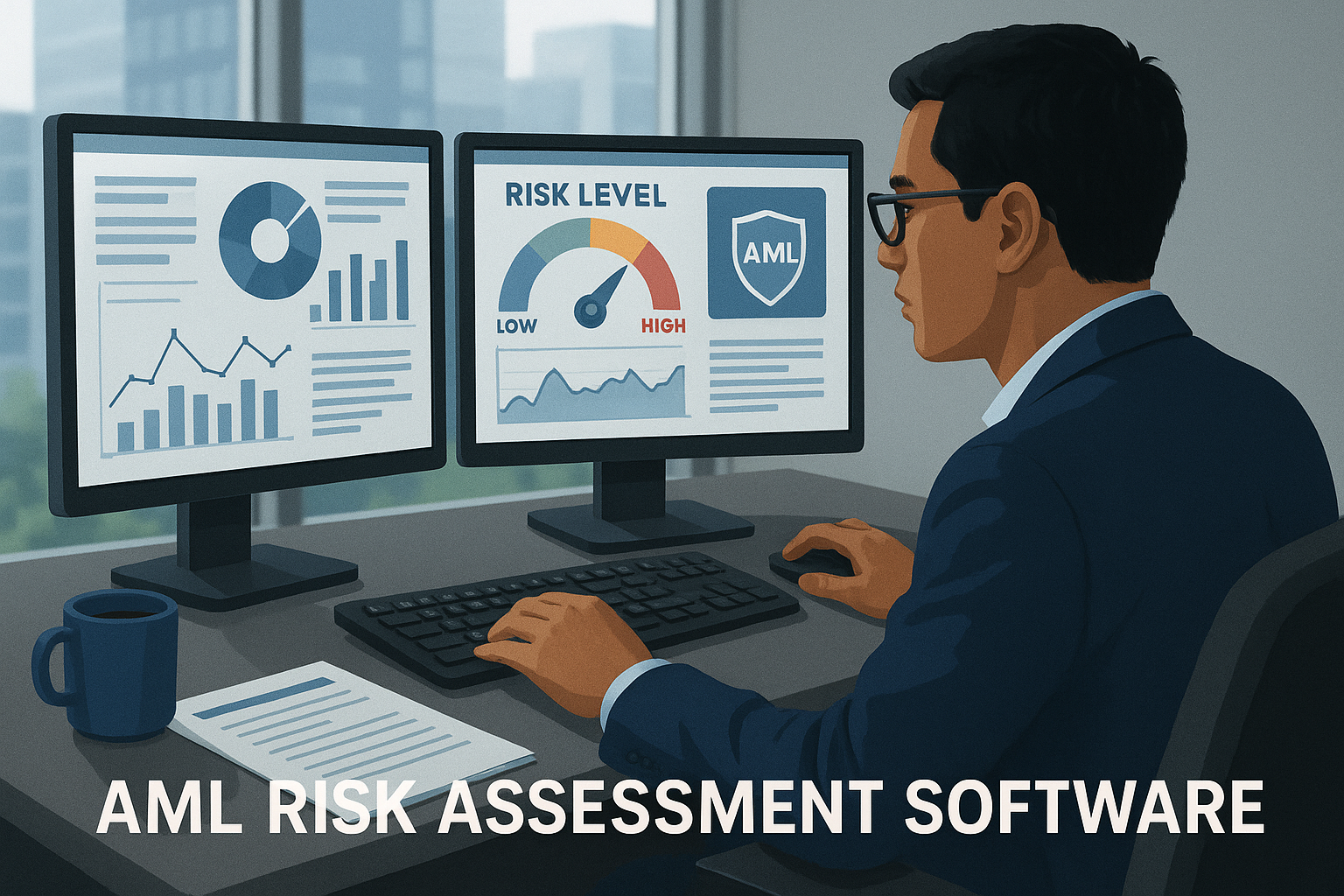The High Cost of False Positives: Why Smarter AI Matters for Australian Banks
.svg)
Every false alert costs time, money, and trust. For Australian banks, the path to smarter compliance begins with smarter AI.
Introduction
Australia’s financial institutions are under increasing pressure to detect and report suspicious activity faster and more accurately. With AUSTRAC intensifying its focus on proactive monitoring and real-time reporting, compliance teams are juggling thousands of alerts daily.
The challenge? Most of them turn out to be false positives.
These are alerts triggered by legitimate transactions that mimic suspicious patterns. They waste investigation resources, delay genuine case handling, and drive up operational costs. In a world where compliance budgets are already stretched, false positives represent one of the biggest hidden costs for Australian banks.
The solution lies in smarter artificial intelligence — systems that can learn, adapt, and make sense of context.

What Are False Positives in AML Compliance?
In anti-money laundering (AML) systems, a false positive occurs when a transaction or customer is flagged as suspicious but later found to be legitimate.
These false alerts stem from traditional rule-based systems that rely on static thresholds and rigid logic. For example:
- A large overseas transfer triggers an alert even if it’s a routine business payment.
- Multiple small transactions appear suspicious, though they align with a customer’s usual behaviour.
- A new account is flagged for activity that is common within its demographic or industry.
Each false positive requires review, documentation, and manual clearance — a costly exercise when multiplied across millions of transactions.
The Scale of the Problem in Australia
1. Alert Explosion
Australian banks generate tens of thousands of alerts per day, most of which require some level of human review. Estimates suggest that up to 95 percent of these are false positives.
2. Compliance Cost Surge
According to industry benchmarks, false positives account for up to 80 percent of AML compliance costs in financial institutions. These costs include analyst time, technology upkeep, and audit documentation.
3. Workforce Strain
Investigators spend hours resolving cases that lead nowhere, leading to burnout, delays, and skill underutilisation.
4. Delayed Detection
With teams focused on clearing irrelevant alerts, truly suspicious activity can slip through the cracks, exposing institutions to regulatory and reputational risk.
5. AUSTRAC Pressure
AUSTRAC expects timely reporting of suspicious matters under the AML/CTF Act 2006. Excessive false positives slow down compliance responsiveness, raising questions about system efficiency and oversight.
The bottom line: false positives are not just a nuisance — they are a strategic risk.
Why Traditional Systems Struggle
1. Rule-Based Rigidities
Legacy systems rely on pre-set thresholds and binary logic, unable to adapt to evolving customer behaviour or emerging crime patterns.
2. Lack of Context
Rules detect anomalies but not intent. They miss the subtlety that distinguishes a genuine transaction from a laundering attempt.
3. Disconnected Data
Fragmented customer, transaction, and behavioural data make it difficult to form a holistic risk picture.
4. Slow Feedback Loops
Analyst outcomes rarely feed back into the model, preventing systems from improving over time.
5. Over-Correction
In an effort to stay compliant, institutions often tighten rules, which only increases the number of false positives.
The result is a cycle of inefficiency that drains resources without necessarily improving detection accuracy.
The Financial Cost of False Positives
1. Investigation Labour
Each false alert can cost AUD 30–50 in labour hours. For institutions reviewing hundreds of thousands of cases annually, this translates into millions in unnecessary expenditure.
2. Technology Maintenance
Older systems require frequent recalibration and patchwork upgrades to stay relevant.
3. Reputational Risk
Slow investigations and delayed customer responses can frustrate legitimate clients, eroding trust.
4. Opportunity Loss
Time spent on false positives could be used for higher-value analysis, such as typology discovery or system optimisation.
5. Regulatory Penalties
Poor alert management can draw scrutiny from AUSTRAC, particularly if genuine suspicious activity goes unreported.
Reducing false positives is not merely about cutting costs — it is about strengthening the institution’s overall compliance posture.

How Smarter AI Solves the Problem
Artificial intelligence transforms AML compliance from a reactive process to an intelligent, adaptive system that learns continuously.
1. Contextual Understanding
AI models analyse multiple dimensions of a transaction — customer profile, behaviour history, peer group, and timing — before flagging it as suspicious.
2. Dynamic Thresholding
Instead of static rules, AI dynamically adjusts thresholds based on evolving risk indicators and customer segments.
3. Behavioural Modelling
Machine learning identifies deviations from individual behavioural patterns, reducing unnecessary alerts from normal activity.
4. Entity Resolution
AI links fragmented data to uncover hidden relationships between accounts, reducing duplicate or redundant alerts.
5. Continuous Learning
Every alert outcome — whether genuine or false — feeds back into the model to refine future accuracy.
6. Explainability
AI-driven systems include built-in explainable AI (XAI) layers that clarify why a decision was made, ensuring transparency for investigators and regulators alike.
AUSTRAC’s View on AI and Automation
AUSTRAC has publicly supported the adoption of RegTech and AI solutions that improve compliance efficiency and accuracy.
The regulator emphasises three key principles for institutions adopting AI:
- Transparency: Systems must provide clear reasoning for every alert.
- Accountability: Humans must remain responsible for final decisions.
- Validation: Models must be regularly tested for accuracy, fairness, and bias.
Smarter AI aligns perfectly with these expectations, helping banks deliver faster, more consistent, and auditable outcomes.
Case Example: Regional Australia Bank
Regional Australia Bank, a community-owned institution, has demonstrated how data-driven innovation can make compliance both efficient and effective. By leveraging intelligent automation, the bank has reduced investigation times and improved alert accuracy while maintaining complete transparency with AUSTRAC.
Its experience shows that advanced technology is not reserved for major players — smaller institutions can also lead in compliance excellence.
Spotlight: Tookitaki’s FinCense — Smarter AI for Smarter Compliance
FinCense, Tookitaki’s AI-powered compliance platform, is built to solve the false positive problem at scale.
- Adaptive Learning: Continuously refines alert logic using investigator feedback and new data.
- Behaviour-Based Risk Models: Understands normal customer patterns to reduce unnecessary flags.
- Federated Intelligence: Incorporates anonymised typologies from the AFC Ecosystem to detect emerging risks.
- Agentic AI Copilot (FinMate): Assists investigators by explaining alerts and drafting SMR narratives.
- Explainable AI: Every detection is auditable and regulator-ready.
- Unified Case Management: Integrates AML, fraud, and sanctions workflows under one intelligent dashboard.
By combining real-time analytics with continuous learning, FinCense delivers measurable results — improving detection accuracy while cutting investigation workload dramatically.
Quantifying the Impact: What Smarter AI Can Achieve
- Up to 90% Reduction in False Positives: AI-powered monitoring can distinguish legitimate transactions from genuinely suspicious ones.
- 50% Faster Case Resolution: Automated summaries and contextual analysis accelerate investigations.
- 30% Lower Operational Costs: Streamlined workflows reduce labour and system maintenance expenses.
- Improved Audit Readiness: Transparent models simplify regulator interactions.
- Higher Staff Retention: Investigators focus on meaningful work instead of repetitive reviews.
These improvements transform compliance from a cost centre into a competitive advantage.
Implementation Roadmap for Australian Banks
- Assess Data Quality: Ensure structured, consistent data across systems.
- Integrate AI Gradually: Start with specific modules like transaction monitoring or case summarisation.
- Train and Upskill Teams: Equip investigators to interpret AI-driven outputs effectively.
- Establish Governance: Maintain clear accountability for model oversight and validation.
- Collaborate with AUSTRAC: Engage early to align innovation with regulatory expectations.
- Measure Outcomes: Track KPIs such as false positive reduction, case closure time, and reporting accuracy.
Challenges in Transitioning to Smarter AI
- Cultural Resistance: Teams may be hesitant to trust AI-generated insights.
- Integration Complexity: Legacy systems can make implementation difficult.
- Model Governance: Ensuring fairness, accuracy, and explainability requires disciplined oversight.
- Cost of Transition: Initial investment may be significant, but long-term savings justify it.
With clear planning, these challenges can be overcome to achieve a more effective and sustainable compliance model.
The Future: Predictive and Collaborative Compliance
The next evolution of compliance will combine predictive AI with collaborative intelligence.
- Predictive Compliance: Systems will forecast potential suspicious activity before it occurs.
- Federated Learning: Banks will share anonymised insights across networks to improve collective accuracy.
- Agentic AI Copilots: Intelligent assistants will handle first-level investigations autonomously.
- Real-Time Regulator Engagement: AUSTRAC will increasingly leverage direct data feeds for continuous oversight.
Australian banks that adopt these innovations early will lead the region in both compliance performance and customer trust.
Conclusion
False positives are more than a technical flaw — they represent lost time, wasted resources, and missed opportunities to stop real crime.
By embracing smarter, context-aware AI, Australian banks can reduce alert fatigue, improve operational efficiency, and meet AUSTRAC’s expectations for speed and accuracy.
Regional Australia Bank shows how innovation at any scale can deliver meaningful impact. With Tookitaki’s FinCense, compliance teams can finally move beyond endless alerts to focus on what truly matters — preventing financial crime and protecting customer trust.
Pro tip: The smartest compliance systems don’t just detect risk; they understand it — and that understanding begins with smarter AI.
Experience the most intelligent AML and fraud prevention platform
Experience the most intelligent AML and fraud prevention platform
Experience the most intelligent AML and fraud prevention platform
Top AML Scenarios in ASEAN

The Role of AML Software in Compliance

The Role of AML Software in Compliance









